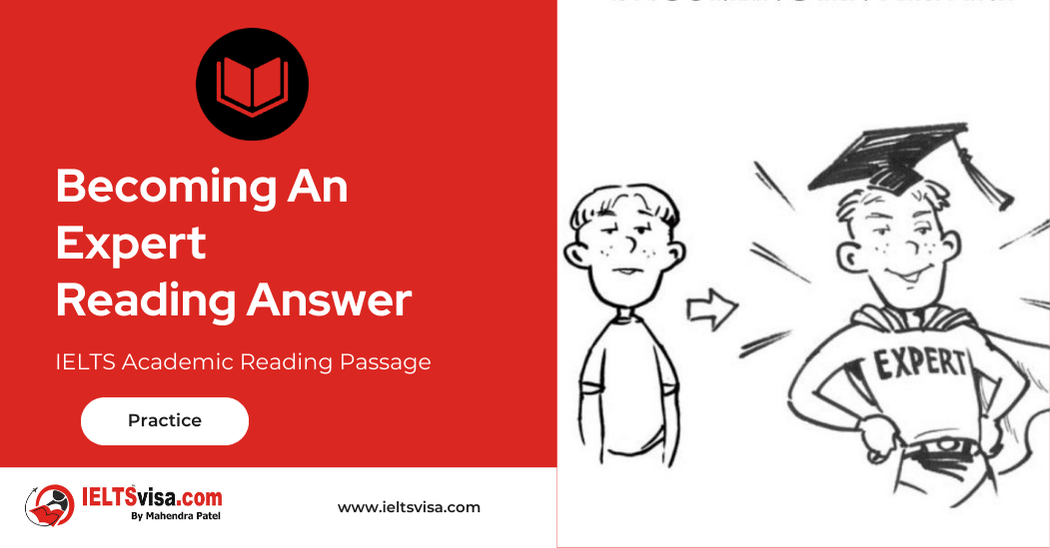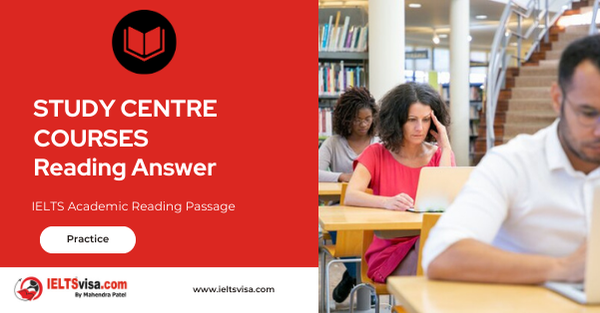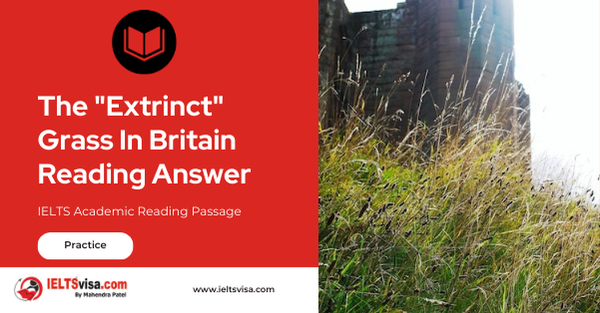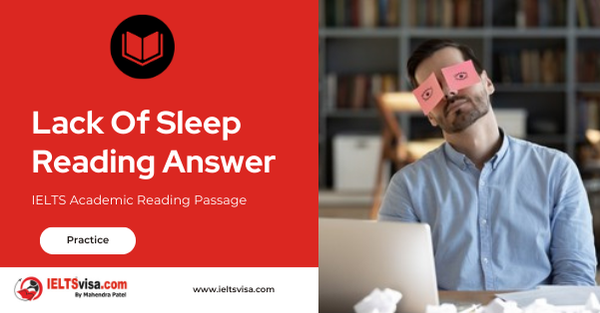The MIT Factor: Celebrating 150 Years Of Maverick Genius Reading Answer
IELTS Academic Reading Passage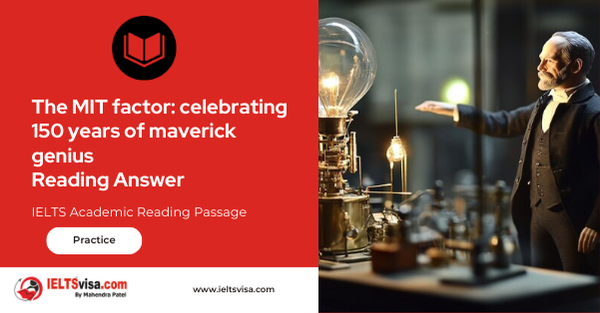
The Massachusetts Institute of Technology has led the world into the future for 150 years with scientific innovations.
The musician Yo-Yo Ma’s cello may not be the obvious starting point for a journey into one of the world’s great universities. But, as you quickly realise when you step inside the Massachusetts Institute of Technology, there’s precious little going on that you would normally see on a university campus. The cello, resting in a corner of MIT’s celebrated media laboratory — a hub of creativity — looks like any other electric classical instrument. But it is much more. Machover, the composer, teacher and inventor responsible for its creation, calls it a ‘hyperinstrument’, a sort of thinking machine that allows Ma and his cello to interact with one another and make music together. ‘The aim is to build an instrument worthy of a great musician like Yo-Yo Ma that can understand what he is trying to do and respond to it,’ Machover says. The cello has numerous sensors across its body and by measuring the pressure, speed and angle of the virtuoso’s performance it can interpret his mood and engage with it, producing extraordinary new sounds. The virtuoso cellist frequently performs on the instrument as he tours around the world.
Machover’s passion for pushing at the boundaries of the existing world to extend and unleash human potential is not a bad description of MIT as a whole. This unusual community brings highly gifted, highly motivated individuals together from a vast range of disciplines, united by a common desire: to leap into the dark and reach for the unknown.
The result of that single unifying ambition is visible all around. For the past 150 years, MIT has been leading the world into the future. The discoveries of its teachers and students have become the common everyday objects that we now all take for granted. The telephone, electromagnets, radars, high-speed photography, office photocopiers, cancer treatments, pocket calculators, computers, the Internet, the decoding of the human genome, lasers, space travel … the list of innovations that involved essential contributions from MIT and its faculty goes on and on.
From the moment MIT was founded by William Barton Rogers in 1861, it was clear what it was not. While Harvard stuck to the English model of a classical education, with its emphasis on Latin and Greek, MIT looked to the German system of learning based on research and hands-on experimentation. Knowledge was at a premium, but it had to be useful.
This down-to-earth quality is enshrined in the school motto, Mens et manus – Mind and hand – as well as its logo, which shows a gowned scholar standing beside an ironmonger bearing a hammer and anvil. That symbiosis of intellect and craftsmanship still suffuses the institute’s classrooms, where students are not so much taught as engaged and inspired.
Take Christopher Merrill, 21, a third-year undergraduate in computer science. He is spending most of his time on a competition set in his robotics class. The contest is to see which student can most effectively program a robot to build a house out of blocks in under ten minutes. Merrill says he could have gone for the easiest route – designing a simple robot that would build the house quickly. But he wanted to try to master an area of robotics that remains unconquered — adaptability, the ability of the robot to rethink its plans as the environment around it changes, as would a human.
‘I like to take on things that have never been done before rather than to work in an iterative way just making small steps forward,’ he explains.
Merrill is already planning the start-up he wants to set up when he graduates in a year’s time. He has an idea for an original version of a contact lens that would augment reality by allowing consumers to see additional visual information. He is fearful that he might be just too late in taking his concept to market, as he has heard that a Silicon Valley firm is already developing something similar. As such, he might become one of many MIT graduates who go on to form companies that fail. Alternatively, he might become one of those who go on to succeed in spectacular fashion. And there are many of them. A survey of living MIT alumni* found that they have formed 25,800 companies, employing more than three million people, including about a quarter of the workforce of Silicon Valley. What MIT delights in is taking brilliant minds from around the world in vastly diverse disciplines and putting them together. You can see that in its sparkling new David Koch Institute for Integrative Cancer Research, which brings scientists, engineers and clinicians under one roof.
Or in its Energy Initiative, which acts as a bridge for MIT’s combined work across all its five schools, channelling huge resources into the search for a solution to global warming. It works to improve the efficiency of existing energy sources, including nuclear power. It is also forging ahead with alternative energies from solar to wind and geothermal, and has recently developed the use of viruses to synthesise batteries that could prove crucial in the advancement of electric cars.
In the words of Tim Berners-Lee, the Briton who invented the World Wide Web, ‘It’s not just another university.
Even though I spend my time with my head buried in the details of web technology, the nice thing is that when I do walk the corridors, I bump into people who are working in other fields with their students that are fascinating, and that keeps me intellectually alive.’
adapted from the Guardian
Questions 1-5
Do the following statements agree with the information in the reading passage? Write
TRUE if the statement agrees with the information FALSE if the statement contradicts the information NOT GIVEN if there is no information on this
- The activities going on at the MIT campus are like those at any other university.
- Harvard and MIT shared a similar approach to education when they were founded.
- The school motto was suggested by a former MIT student.
- MIT’s logo reflects the belief that intellect and craftsmanship go together.
- Silicon Valley companies pay higher salaries to graduates from MIT.
Questions 6-9
Complete the notes below.
Choose NO MORE THAN TWO WORDS from the passage for each answer.
Christopher Merrill – student at MIT
Degree subject: 6…………………
Competition: to 7……………….. the automated construction of a house
Special focus on: the 8……………….. of robots
Future plans: to develop new type of 9…………………
Questions 10-13
Answer the questions below.
Choose NO MORE THAN TWO WORDS from the passage for each answer.
10. What proportion of workers at Silicon Valley are employed in companies set up by MIT graduates? 10…………………
11. What problem does MIT’s Energy Initiative aim to solve? 11…………………
12. Which ‘green’ innovation might MIT’s work with viruses help improve? 12…………………
13. In which part of the university does Tim Berners-Lee enjoy stimulating conversations with other MIT staff? 13…………………

Solution For: The MIT Factor: Celebrating 150 Years Of Maverick Genius Reading Answer
| 1. FALSE | 8. adaptability |
| 2. FALSE | 9. contact lens |
| 3. NOT GIVEN | 10. one quarter |
| 4. TRUE | 11. global warming |
| 5. NOT GIVEN | 12. electric cars |
| 6. computer science | 13. corridors |
| 7. program |
Review and Practice
- Regularly practice with IELTS reading samples and time yourself to get used to the pressure of the exam.
- Review your mistakes to understand where you went wrong and how to avoid similar errors in the future.
Our Books
Master IELTS Speaking Part 1
IELTS Writing Task 1 Book
IELTS Writing Task 2 Book
The MIT Factor_ Celebrating 150 Years Of Maverick Genius Reading Answer Explanation
Comin Soon
Practice IELTS Other Modules
IELTS Listening
The IELTS Listening test assesses how well you can understand spoken English in various contexts. It lasts about 30 minutes and is divided into four sections with a total of 40 questions. The listening tasks become increasingly difficult as the test progresses.
IELTS Academic Reading
The IELTS Academic Reading section assesses your ability to understand and interpret a variety of texts in academic settings. It is designed to evaluate a range of reading skills, including skimming for gist, reading for main ideas, reading for detail, understanding inferences, and recognizing a writer's opinions and arguments.
IELTS Speaking
The IELTS Speaking test assesses your ability to communicate in English on everyday topics. It lasts 11-14 minutes and consists of three parts: introduction, cue card, and a discussion based on the cue card topic.
IELTS General Reading
IELTS General Reading tests your ability to understand and interpret various types of texts. Here are some key areas and types of content you can expect to encounter in the reading section, along with tips for effective preparation.
IELTS Academic Writing Task 1
In IELTS Academic Writing Task 1, you are presented with a visual representation of information, such as graphs, charts, tables, or diagrams, and you are required to summarize, compare, or explain the data in your own words.
IELTS General Writing Task 1
In IELTS General Writing Task 1, you are required to write a letter based on a given situation. The letter can be formal, semi-formal, or informal, depending on the prompt. Here’s a breakdown of the key components to include in your letter
IELTS Academic Writing Task 2
In IELTS Academic Writing Task 2, you are required to write an essay in response to a question or topic. Here’s a guide to help you understand the essential elements of this task
IELTS Exam Tips
To succeed in the IELTS exam, practice regularly, familiarize yourself with the test format, improve your vocabulary, develop time management skills, and take mock tests to build confidence.
Grammer for IELTS
Grammar is the foundation of effective communication in English. Understanding tense usage, subject-verb agreement, and sentence structure enhances clarity and coherence in writing and speaking.
Vocabulary for IELTS
Vocabulary plays a crucial role in the IELTS (International English Language Testing System) exam, especially in the Speaking and Writing sections. Here’s an overview of why vocabulary is important and how it impacts your performance
RECENT IELTS SAMPLES QUESTIONS AND ANSWERS
Becoming An Expert Reading Answer
A Expertise is commitment coupled with creativity. Specifically, it is the commitment of...
STUDY CENTRE COURSES Reading Answer
SELF-STUDY TIPS AHowever difficult you find it to arrange your time, it will pay off in the...
The Extrinct Grass In Britain Reading Answer
A The British grass interrupted brome was said to be extinct, just like the Dodo. Called...
Morse Code Reading Answer
A. A new satellite-based system is being implemented to replace Morse code for sending...
Magnetic Therapy Reading Answer
AMagnetic therapy, which is a $5-billion market worldwide, is a form of alternative medicine...
Lack Of Sleep Reading Answer
Section A It is estimated that the average man or woman needs between seven-and-a-half and...

